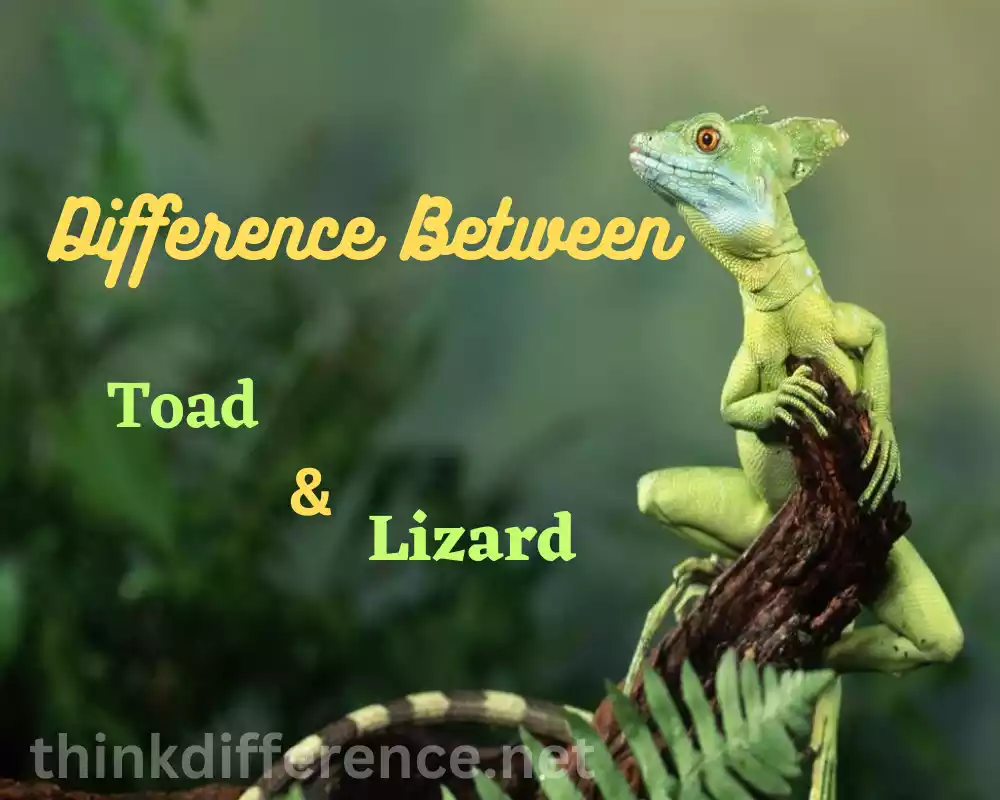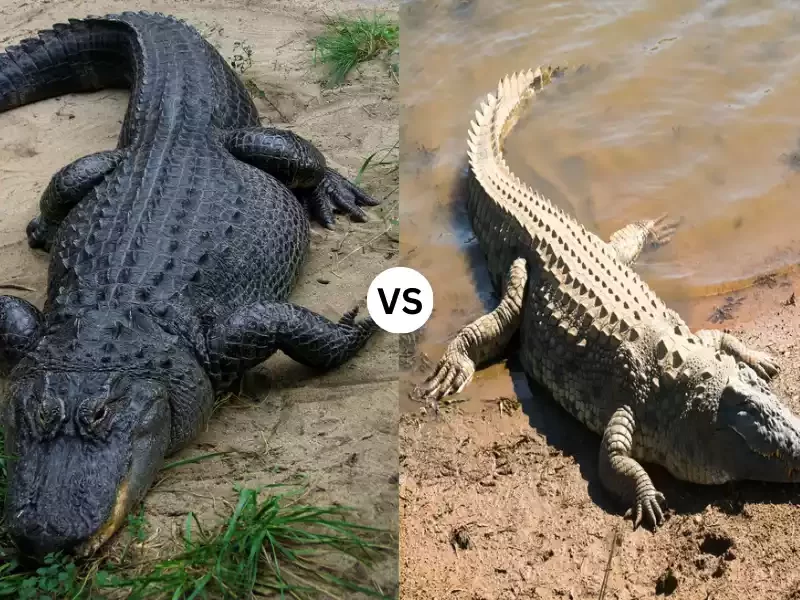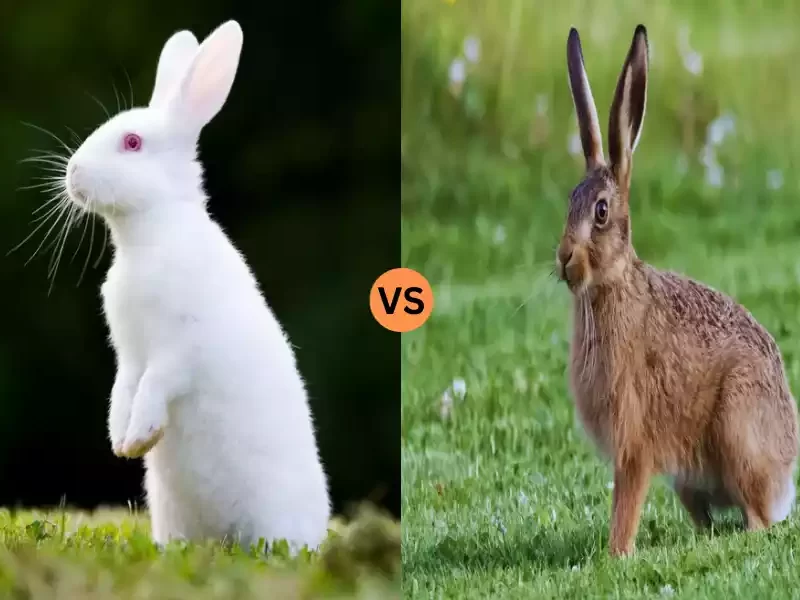Lizards and toads are fascinating creatures found worldwide, belonging to the class Reptilia but possessing unique behaviors and characteristics that distinguish between the two species. Below we explore these fascinating animals’ features such as characteristics, differences in habitat, traits as well as other interesting details of these fascinating beings.
Brief overview of Toad and Lizard
Lizards and toads represent two separate genera of reptiles and amphibians with specific appearance and behavioral differences between themselves.
Toads:
Toads are amphibians belonging to the family Bufonidae. They have a stout body and short legs, typically adapted for a life on land. Toads are known for their dry, warty skin, which helps them conserve moisture.
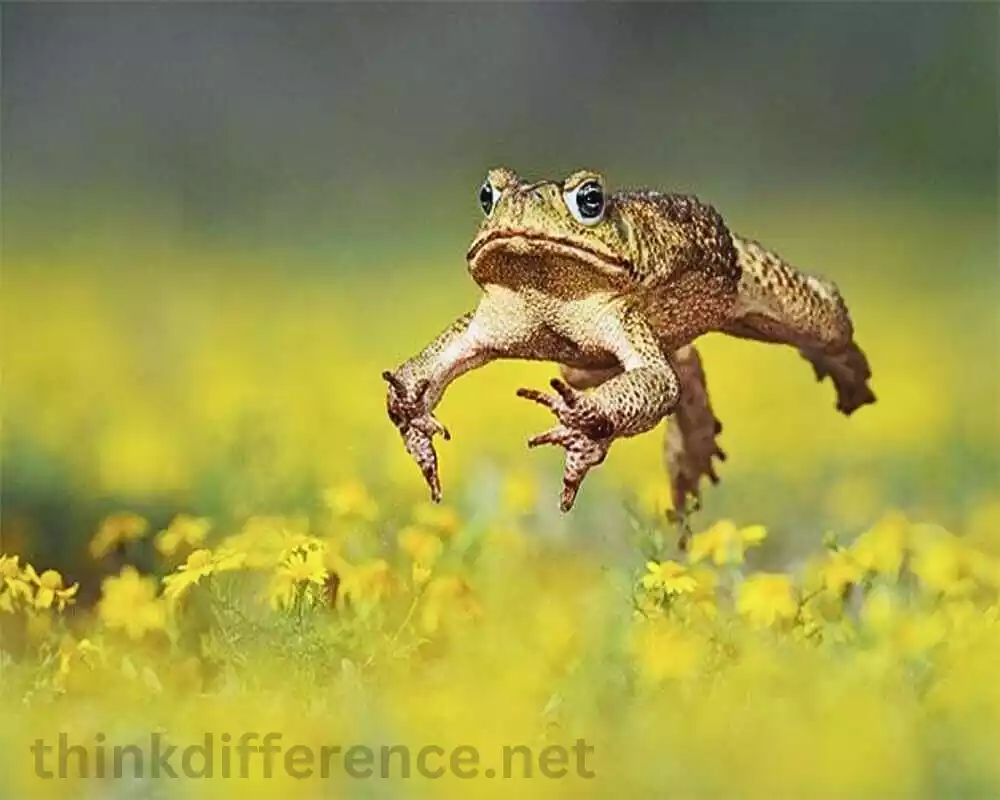
They possess parotoid glands behind their eyes that secrete toxins, acting as a defense mechanism against predators. Toads tend to prefer humid environments and can be found across many habitats such as grasslands, forests, and wetlands.
Their unique reproductive cycle includes mating and egg-laying activities before hatching into tadpoles that develop further before eventually emerging as fully grown toads themselves. They feed predominantly on insects as well as smaller invertebrates like other carnivorous creatures like amphibians.
Lizards:
Lizards are reptiles belonging to the order Squamata, which encompasses various families and species. They have a slender body, long tail, and typically four limbs with claws. Unlike toads, lizards have scales covering their skin, providing protection and enabling them to retain moisture. Lizards exhibit diverse characteristics and adaptations depending on their species and habitat.
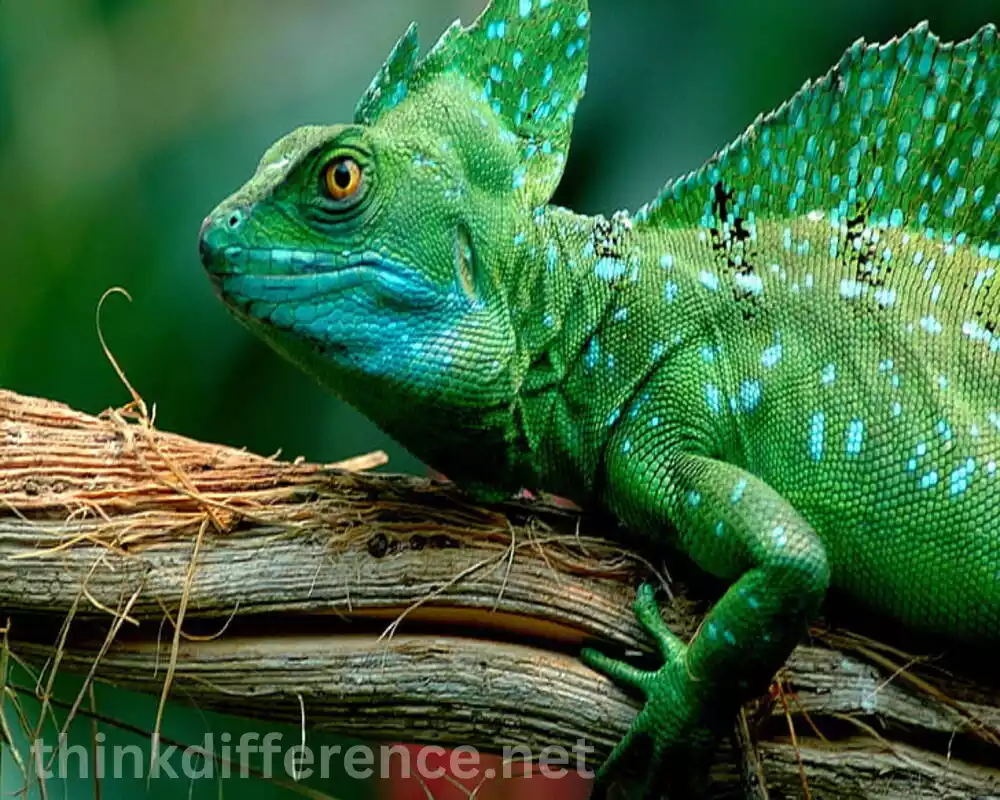
They inhabit different ecosystems such as deserts, rainforests, and grasslands. Lizards reproduce through either egg-laying or live birth, depending on the species. Diets of different species vary, with some being carnivorous while others being more generalist eaters that feed off insects, small animals, or plant matter. Lizards are known for their ability to regulate body temperature by basking in the sun or seeking shade.
Lizards and toads fall within different taxonomic categories, yet both possess the ability to regulate body temperature externally through means such as external sources of warmth. Their differences in physical characteristics, habitat preferences, reproductive strategies, and feeding behaviors contribute to their distinct roles within ecosystems. Understanding these differences is essential for appreciating their unique attributes and facilitating their conservation.
Importance of understanding the difference between Toad and Lizard
Knowledge of the difference between lizards and toads is vitally important, for several reasons:
- Species Identification: Knowing the characteristics and traits that differentiate toads from lizards allows us to accurately identify and classify the species we encounter. Researchers, scientists, and naturalists who research reptiles are in desperate need of such information – as are people simply curious to gain a greater knowledge about reptiles and amphibians in general.
- Ecological Significance: Lizards and toads each fill distinct ecological niches within ecosystems and serve vital purposes within them. Understanding their contributions – for instance, in controlling insect populations as well as seed recycling nutrients – allows us to recognize their significant contributions to proper ecosystem functioning – such as their roles in controlling insects as well as dispersing seeds or cycling nutrients back through. This knowledge can aid in making informed decisions regarding habitat conservation and management.
- Conservation Efforts: Lizards and toads face various threats, such as habitat destruction and pollution, climate change impacts, and an increasing presence of invasive species. By understanding the specific conservation needs and challenges faced by these animals, conservationists can develop targeted strategies and initiatives to protect their populations. Differentiating between toads and lizards helps in assessing their population status, monitoring their habitat,s and implementing effective conservation measures.
- Public Safety: Some toads and lizards possess adaptations or behaviors that can have implications for human safety. For example, certain toad species produce toxic secretions and improper handling or ingestion of these toads can be harmful. Knowledge about the differences between toads and lizards can help educate the public about potential risks and promote responsible interactions with these animals.
- Education and Appreciation: Understanding the differences between toads and lizards fosters a deeper appreciation and interest in the natural world. It allows individuals to appreciate the unique adaptations, behaviors, and ecological roles of these animals. This knowledge can inspire people to engage in nature-based activities, conservation efforts and promote overall environmental awareness.
Understanding the difference between toads and lizards has implications for species identification, ecological understanding, conservation efforts, public safety, and fostering appreciation for the natural world. It enables us to better appreciate the diversity of amphibians and reptiles, contribute to their conservation, and make informed decisions regarding their habitats and interactions with humans.
Characteristics of Toads
Toads possess several distinctive characteristics that set them apart from other amphibians. Here are some key characteristics of toads:
- Body Shape and Size: Toads have a relatively stout and compact body shape compared to frogs. They typically have a squat appearance with short legs. The specific body shape and size can vary among different species of toads.
- Skin Texture and Coloration: One of the defining features of toads is their rough, bumpy skin. Unlike the smooth and slimy skin of frogs, toads have dry, warty skin. The texture helps them retain moisture and adapt to terrestrial environments. Their skin can be various shades of brown, gray, or green, often providing camouflage in their natural habitats.
- Parotoid Glands: Toads possess specialized glands called parotoid glands located behind their eyes and on the sides of their neck. These glands secrete toxins, which serve as a defense mechanism against predators. The toxins are often distasteful or even poisonous, deterring potential threats.
- Body Features: Toads may have additional physical features that vary among species. These can include enlarged cranial crests, bumps, or warts on their bodies. Some toads have elongated hind limbs, enabling them to make short hops, while others have shorter limbs adapted for a more terrestrial lifestyle.
- Vocalizations: Toads are known for their distinctive calls, especially during the breeding season. Males produce sounds to attract females and the calls can vary significantly among species. These calls can range from melodious trills to high-pitched whistles or deep, resonating croaks.
- Habitat Preferences: Toads generally prefer humid environments like grasslands, forests, and wetlands as breeding grounds. Urban gardens also contain them. Their typical breeding ground includes lakes, ponds or slow-moving streams as an additional water body nearby.
- Nocturnal or Crepuscular Behavior: Crepuscular or night-time toads typically hunt most actively at dusk or dawn and require highly developed eyes and retinas to hunt effectively in low-light environments. They possess adaptations that enable them to hunt effectively by sensing dim lighting conditions for food sources or navigating during dim conditions.
- Carnivorous Diet: Toads are carnivorous species that primarily feed on insects and other small invertebrates. They use their sticky tongues to capture prey, which they then swallow whole. Some larger species of toads can consume small vertebrates, such as mice or smaller amphibians.
These characteristics collectively contribute to the unique appearance, behavior, and ecological role of toads in their respective habitats. Noting the variations and variances across species and geographic regions should also be kept in mind when discussing toad characteristics.
Characteristics of Lizards
Lizards stand out among reptile species due to a range of distinguishing traits that set them apart, among which there are some notable hallmarks:
- Body Shape and Size: Lizards have a typically elongated and slender body shape, with a distinct head and a long tail. Size can range anywhere from just centimeters up to several meters in length depending on species.
- Scales: One of the defining features of lizards is their scaly skin. Their scales provide protection and help to retain moisture. The scales can vary in size, texture, and arrangement, depending on the species. Some lizards have smooth, overlapping scales, while others have keeled scales with raised ridges.
- Limbs: Most lizard species have four limbs, each with clawed toes. The limbs are positioned laterally, allowing lizards to move with agility and climb various surfaces. Some lizards, such as legless lizards and certain skinks, have reduced or absent limbs, adapting to a more snake-like body form.
- Teeth: Lizards have well-developed teeth, adapted to their specific diet. The shape and arrangement of an animal’s teeth will depend upon whether or not they are carnivorous, herbivorous, or omnivorous. Teeth are used for seizing and holding prey or for chewing plant matter.
- Tail: Lizards possess a long, flexible tail, which serves various purposes. The tail helps with balance, communication, and defense. Some lizards can even detach their tails as a defensive mechanism, allowing them to escape from predators while the detached tail continues to wiggle, distracting the predator’s attention.
- Skin Coloration and Patterns: Lizards exhibit a wide range of colors and patterns on their skin, which can serve various functions. Coloration may help with camouflage, thermoregulation, or communication. Some species can even change their skin color to match their surroundings or to regulate body temperature.
- Habitat Preferences: Lizards can be found across a wide array of habitats around the world, from grasslands and deserts to tropical rainforests and forests. Different species of lizards have adapted to specific environments and exhibit preferences for certain types of vegetation, temperature ranges, or substrate types.
- Feeding Behavior: Lizards display varied feeding behaviors depending on their species and ecological niche. Certain species can be either herbivorous, eating mostly plants, or carnivorous, devouring insects, small vertebrates, and any species of lizards they come across. Others are even known to combine both animal and plant matter into their diet.
- Thermoregulation: Lizards are ectothermic animals, meaning that they rely on external heat sources such as sources of warmth to regulate their body temperatures. They exhibit various thermoregulatory behaviors, such as basking in the sun to warm up or seeking shade or burrows to cool down.
- Reproductive Strategies: Lizards employ diverse reproductive strategies. Some species lay eggs, which are often buried or protected in nests, while others give birth to live young. Mating behaviors and courtship rituals can also differ among species.
These characteristics collectively contribute to the remarkable diversity and adaptability of lizards. Important to keep in mind is that although these characteristics generally apply to all Lizard species and locations, there can be variations and exceptions within different populations or habitats.
Habitat and Distribution
Habitat and distribution patterns can vary between toads and lizards. Here is a general overview of their habitat preferences and distribution:
Toads:
Toads can be found living in diverse habitats including grasslands, forests, wetlands, and urban environments. Their preference lies with moist habitats like lakes, ponds, or streams but can even be seen in marshes. These water bodies serve as breeding sites for most toad species, as they require water for their reproductive cycle.
Toads can also be found in drier habitats, as they have adapted to withstand periods of drought. Some toad species are specialized for specific habitats, such as arboreal toads that inhabit trees or burrowing toads that live in underground tunnels.
Indeed, toad distribution varies significantly around the world, with different species inhabiting specific regions or parts. For instance, one species, Anaxyrus americanus is native to North America while European Common Toads such as Bufo bufo are widely found across Europe and parts of Asia – each species having specific geographic distribution areas or preferred habitats they occupy.
Lizards:
Lizards can be found throughout an ecosystem’s diversity – deserts, forests, grasslands as well as coastal environments are home to these animals – including deserts and forests; grasslands as well as deserted regions near water sources like rivers.
Some species have even made themselves at home living arboreally among trees while others live more terrestrially near rivers or other water sources – meaning you might encounter these reptiles across numerous continents with various levels of endemism in various zones.
Habitat preferences of lizard species depend upon ecological needs; examples include the Gila Monster (Heloderma suspectum), which lives throughout desert areas in the southwestern United States and Mexico, While green Iguanas (Iguana Iguanas), which reside in tree tops across Central as well as South America.
Their distribution can also depend on temperatures, availability of moisture resources as well as food resources from plant species.
As is important to keep in mind, toads and Lizards may experience changes to their preferred habitat due to climate change effects or habitat destruction, or the introduction of invasive species which could impact populations or change limitations.
Reproduction and Lifecycle
Reproduction and lifecycle processes differ between toads and lizards. Here’s an overview of their reproductive strategies and lifecycles:
Toads:
Toads typically undergo a complex reproductive cycle that involves external fertilization and a metamorphosis stage:
- Breeding: Toads gather near bodies of water, such as ponds, lakes, or slow-moving streams, for breeding. Males produce distinct mating calls to attract females. When a male successfully courts a female, he grasps her from behind in a behavior called amplexus. The female releases eggs into the water and the male fertilizes them externally by releasing sperm. The number of eggs laid varies among species, with some producing thousands of eggs.
- Tadpole Stage: The fertilized eggs develop into aquatic larvae known as tadpoles. Tadpoles have gills for breathing underwater and a long tail for swimming. They feed on algae, plants, and small organisms present in the water. During this stage, they undergo significant growth and development.
- Metamorphosis: As the tadpoles grow, they undergo metamorphosis, which involves the development of lungs and limbs. Over time, their tails shrink and their bodies transform into the adult toad form. This process can take several weeks to months, depending on the species and environmental conditions.
- Adult Stage: Once the metamorphosis is complete, the juvenile toads leave the water and begin their terrestrial life. They develop lungs for breathing air and adapt to a diet of insects, spiders, and other small invertebrates. The juvenile toads continue to grow and mature into reproductive adults and the cycle repeats when they reach sexual maturity.
Lizards:
Lizards exhibit a range of reproductive strategies, including internal fertilization and various modes of reproduction:
- Courtship and Mating: Lizards engage in courtship behaviors to attract mates. These behaviors can include visual displays, head-bobbing, tail wagging, or push-ups. In some species, males establish territories and engage in aggressive interactions with other males to compete for mates.
- Internal Fertilization: Most lizard species practice internal fertilization, where the male deposits sperm into the female’s reproductive tract using specialized organs called hemipenes. The male and female may remain physically connected during this process, known as “cloacal lock.”
- Egg-Laying: Many lizard species lay eggs, which are deposited in underground burrows, nests, or hidden locations. The eggs are protected and incubated by the female, with incubation periods varying depending on environmental conditions and the species involved.
- Live Birth: Some lizard species exhibit viviparity, where the embryos develop inside the female’s body and are nourished by a placental connection or a yolk sac. The female gives birth to live young, bypassing the egg stage.
- Parental Care: Parental care in lizards varies among species. In some cases, females guard and protect the eggs until they hatch. In other species, there is no parental care, and the hatchlings are independent from the moment they are born or emerge from the eggs.
- Growth and Maturation: Once hatched or born, lizard offspring resemble miniature versions of adults and are immediately capable of feeding and moving on their own. They undergo growth and maturation, gradually reaching sexual maturity.
It’s important to note that reproduction and lifecycle strategies can vary among different species of toads and lizards. Additionally, environmental factors, such as temperature, humidity, and resource availability, can influence the timing and success of reproduction for both groups.
Diet and Feeding Behavior
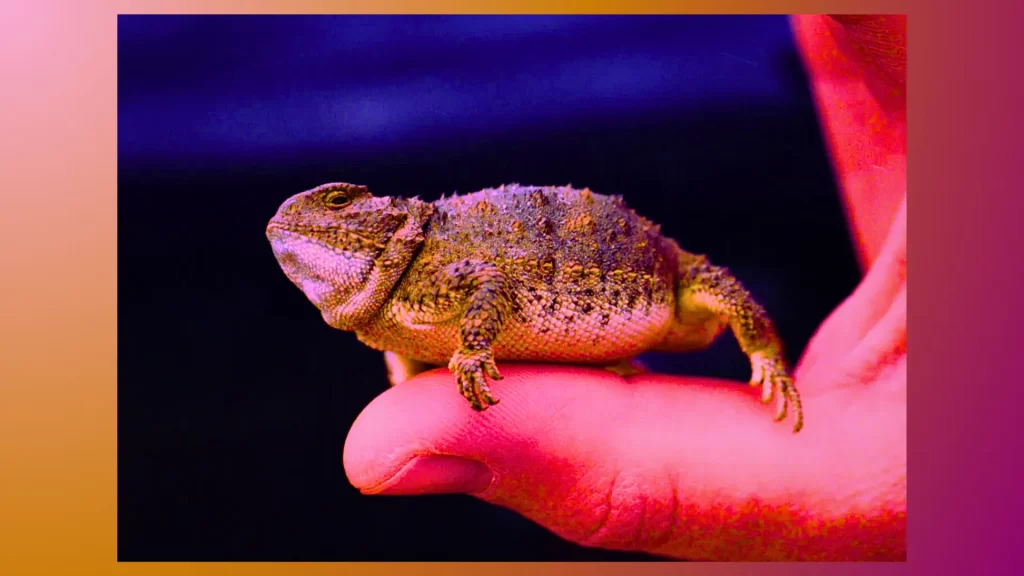
Toads and lizards have different dietary preferences and feeding behaviors. Here’s an overview of their diet and feeding characteristics:
1. Toads:
Toads are carnivores primarily eating tiny invertebrates as part of their diet, while their feeding behaviors have evolved to efficiently capture prey for consumption.
Here are some important details regarding their feeding practices and diet:
-
- Insectivorous: Toads feed on an assortment of insects including beetles and ants as well as flies crickets spiders and beetles, to name but a few. Their keen senses allow them to identify small arthropods both through scent detection as well as sight.
- Ambush Predators: Toads are typically sit-and-wait predators. They remain motionless, often blending with their surroundings, and rely on their excellent camouflage to ambush unsuspecting prey. When an opportunity arises, they strike with a quick flick of their sticky tongue, which adheres to the prey, pulling it into the toad’s mouth.
- Foraging Techniques: Some toad species also engage in active foraging. They may use their front limbs to dig in the ground or leaf litter to uncover hidden prey. This behavior is more common in terrestrial toads that inhabit drier habitats.
- Diet Variation: Though most toad species are insectivores, a few have been observed eating small vertebrates such as small birds, mice, or amphibians as food, though insects and invertebrates remain their main food sources.
2. Lizards:
Lizards can have an extremely varied diet that ranges from insectivorous to carnivorous or even carnivorous eating patterns.
Here are some key facts regarding their food consumption and habits:
-
- Insectivorous: Lizard species tend to be insectivores, eating an array of arthropods and insects from beetles grasshoppers termites ants spiders to smaller invertebrates.
- Carnivorous: Some lizard species have a more carnivorous diet, preying on other small animals. They could eat small reptiles, birds, mammals, amphibians, and even other lizards as food sources. This is more common in larger species or those occupying higher trophic levels.
- Herbivorous/Omnivorous: Certain lizard species have adapted to consume plant matter, including leaves, fruits, flowers, and nectar. These lizards may have specialized dentition and digestive systems to process plant material. Some lizards exhibit omnivorous tendencies, consuming a combination of insects, fruits, and vegetation.
- Feeding Strategies: Lizards employ various feeding strategies depending on their habitat and prey availability. Some are active foragers, actively hunting and chasing down prey, while others rely on ambush techniques similar to toads. Arboreal lizards may search for insects and small prey among trees and foliage.
- Feeding Frequency: Lizards generally have a higher metabolic rate than toads and require more frequent feeding. Smaller lizards often feed daily or every few days, while larger lizards may consume larger meals less frequently.
It’s important to note that the specific diet and feeding behavior can vary significantly between different species of toads and lizards. Factors such as habitat, body size, and ecological niche influence their dietary preferences and feeding strategies.
Predators
Both toads and lizards have natural predators in their respective habitats. Here’s an overview of some common predators for each group:
Toads:
- Snakes: Snakes are major predators of toads. They can swallow toads whole due to their flexible jaws. Some snake species, such as water snakes and garter snakes are particularly adept at capturing toads near water bodies.
- Birds: Various bird species, including herons, egrets, hawks, owls, and certain shorebirds, prey on toads. They may hunt toads both on land and in water, depending on their foraging strategies and the availability of suitable prey.
- Mammals: Mammalian predators such as skunks, raccoons, foxes, and coyotes may eat toads when given an opportunity. These predators may be attracted to the abundance of toads during breeding seasons near water bodies.
- Reptiles: Some reptiles, including larger snakes, monitor lizards, and certain turtles, can prey on toads, especially when they encounter them in their habitats or during foraging activities.
- Invertebrates: Various invertebrates, such as large spiders and predatory insects like beetles and mantises, can capture and feed on smaller toad species or tadpoles.
Lizards:
- Birds of Prey: Raccoons such as hawks, eagles, and falcons have long been known for preying upon lizards. Their sharp eyesight and hunting techniques allow them to become efficient hunters in open areas.
- Snakes: Snakes are known predators of Lizards. Quick to strike and capture prey quickly both at ground level or within trees, snakes like rattlesnakes, boa constrictors, and kingsnakes can often be found eating these reptiles for sustenance.
- Mammalian Predators: Mammalian predators include larger carnivorous mammals such as coyotes, foxes, wild cats, and raccoons that feed off of carrion from animals such as coyotes or coyotes that could prey upon and feed off of lizards if given the chance.
- Other Lizards: Other Lizard species such as monitor lizards or some skinks can prey upon smaller species in a population forming an ecosystem-level predator/prey relationship within its population.
- Amphibians: When circumstances warrant it, larger amphibians such as salamanders or frogs may consume smaller lizards – especially where there are differences in size as well as when an amphibian has reached an insecure stage in its lifecycle. This phenomenon occurs especially if it involves size distinction and or vulnerable stages for either species involved.
Predation plays an integral role in maintaining environmental balance by controlling populations and providing equilibrium among ecosystems. Predators for any particular species vary based on factors like habitat area, type, and size as well as how the prey species behave. Predation plays a part in nature that must be respected.
Communication and Sensory Perception
Toads and lizards have different methods of communication and possess various sensory adaptations. Here’s an overview of their communication and sensory perception abilities:
Toads:
- Vocalizations: Toads are known for their distinctive vocalizations, particularly during the breeding season. Males produce calls to attract females and establish territory. These calls vary among species and can range from melodic trills to high-pitched chirps.
- Visual Signals: Toads use visual signals as a form of communication, especially during courtship and territorial displays. Males may exhibit specific body postures, color changes, or throat inflation to signal their dominance or attractiveness to potential mates.
- Chemical Communication: Toads have well-developed olfactory systems and utilize chemical signals to communicate. They release pheromones, particularly during breeding, to attract mates. These chemical cues also help individuals recognize their species and distinguish between potential rivals or predators.
- Tactile Communication: Physical interactions, such as amplexus (mating embrace) in toads, provide tactile communication between individuals. This allows males to establish and maintain their grip on the female during breeding.
- Sensory Perception: Toads have acute vision, allowing them to detect movements and perceive their surroundings. They also have a well-developed sense of smell to detect chemical cues in their environment.
Lizards:
- Visual Displays: Lizards often use visual displays to communicate with conspecifics or to signal their intentions. These displays can involve body movements, head-bobbing, push-ups, and changes in coloration. They serve purposes such as establishing territory, attracting mates, or signaling aggression.
- Tail Movements: Many lizards can voluntarily detach their tails as a defense mechanism, which wriggles or moves independently. This behavior can distract predators and allow the lizard to escape. The regrown tail can also serve as a visual signal to potential mates or rivals.
- Chemical Communication: Lizards use chemical signals for various purposes, including marking territory, attracting mates, or signaling aggression. They have specialized glands in their skin that can release pheromones or other scent cues.
- Tactile Communication: Physical interactions, such as aggressive displays or courtship behaviors, involve tactile communication among lizards. They may use touch or body contact to convey dominance, submission, or reproductive intentions.
- Sensory Perception: Lizards possess excellent visual perception and can detect movements and colors in their environment. They rely on their keen eyesight to locate prey, spot predators and communicate with conspecifics. Lizards also have a well-developed sense of smell and can detect chemical cues in their surroundings.
Important to bear in mind when studying different species of lizards and toads is their different abilities to communicate and sense environments; such adaptations allow individuals to interact with one another as well as react quickly to any ecological signals present in their environments.
Conservation Status and Threats
Toads and lizards face different conservation statuses and threats due to various factors. Here’s an overview of their conservation status and some common threats they encounter:
1. Toads:
The conservation status and threats to toads can vary depending on the species and their geographic distribution. Some general considerations include:
- Conservation Status: Several toad species are classified under different conservation categories, ranging from Least Concern to Critically Endangered, based on their population trends and the threats they face. For example, the Mallorcan midwife toad (Alytes muletensis) is listed as Critically Endangered due to habitat loss and introduced predators.
- Habitat Loss and Fragmentation: One of the greatest threats facing toads is habitat degradation and fragmentation. Wetland drainage, deforestation, urbanization, and agricultural expansion can destroy or degrade their preferred habitats, reducing available breeding sites and foraging areas.
- Pollution and Contaminants: Toads may become susceptible to contamination and pollutants such as herbicides and pesticides as well as heavy metals and chemical runoff, among other harmful agents. These pollutants can contaminate their habitats, leading to adverse effects on their survival, reproductive success, and overall health.
- Climate Change: Climate change poses challenges for toad populations. Shifts in temperature and precipitation patterns can impact breeding habitats and disrupt the synchronization of breeding cycles with suitable conditions. Extreme weather conditions such as droughts or floods could also affect toad populations, potentially decreasing them further.
- Invasive species: Predatory fish, mammals, reptiles, or amphibians could pose a severe threat to toad populations by preying upon or competing with them for resources – leading them to decrease in numbers as a result.
2. Lizards:
The conservation status and threats to lizards vary among species and their geographic ranges. Some general considerations include:
- Conservation Status: Lizard species have different conservation statuses, ranging from Least Concern to Critically Endangered, depending on factors such as population size, range, and specific threats. For example, the Gila monster (Heloderma suspectum) is listed as Near Threatened due to habitat loss and collection for the illegal pet trade.
- Habitat Loss and Fragmentation: Similar to toads, habitat loss and fragmentation are significant threats to lizards. Deforestation, urbanization, agricultural activities, and habitat conversion can reduce available habitats, disrupt connectivity, and limit resources for lizards.
- Invasive Species: Invasive predators, such as predatory mammals, snakes, or other lizard species, can negatively impact native lizard populations. They may compete for resources, prey upon lizards or directly affect their reproductive success.
- Climate Change: Climate change can have adverse effects on lizard populations. Shifts in temperature, precipitation and habitat suitability can impact their survival, reproductive success, and overall distribution. Lizards may face challenges in adapting to rapid environmental changes.
- Overexploitation: Some lizard species are targeted for the pet trade or traditional medicine purposes. Overcollection can lead to population declines and negatively impact wild populations.
- Disease and Pathogens: Lizards can be susceptible to various diseases, including fungal infections, parasitic infections or ,viral outbreaks. These diseases can impact their health, reproduction and overall population dynamics.
Conservation efforts for both toads and lizards often involve habitat protection, restoration and management, along with raising awareness about their ecological importance. Monitoring population trends, implementing regulations on trade and collection, and mitigating threats are crucial for their long-term survival.
Common Toad Species
There are thousands of species of toads around the globe. Here are just a few examples of some of the more widely seen ones:
- American Toad (Anaxyrus americanus): Found in North America, the American toad is a medium-sized species with warty skin and a prominent parotoid gland behind each eye. They inhabit different habitats such as grasslands, forests and urban environments.
- European Common Toad (Bufo bufo): The European common toad is widely distributed across Europe, including the United Kingdom. It has rough, warty skin and is known for its distinctive mating call. It prefers moist habitats such as woodlands, meadows and gardens.
- Cane Toad (Rhinella marina): Cane toads originally hail from Central and South America but now thrive across Australia and parts of Asia. It is a large-sized toad with toxic skin secretions. Cane toads are known for being highly invasive species that present serious threats to native wildlife populations.
- Fowler’s Toad (Anaxyrus fowleri): Native to the eastern United States and parts of Canada, Fowler’s toad is a small toad species with gray or brownish skin and a distinct pattern of dark spots. They inhabit meadows, forests and coastal zones, often found at high densities.
- Fire-bellied Toad (Bombina spp.): The fire-bellied toad is a group of small-sized toads found in parts of Europe and Asia. They are known for their bright green or orange-red undersides, which serve as a warning signal to predators. They inhabit wetlands, ponds and marshes.
- Asian Common Toad (Duttaphrynus melanostictus): Also known as the Asian black-spined toad, this species is widespread in Asia, including countries like India, China and Indonesia. It has rough skin with distinct black markings and is commonly found in various habitats, including agricultural areas and urban environments.
These are only some of the many species of toads worldwide. Each species has its own unique characteristics, distribution range and habitat preferences.
Common Lizard Species
There are thousands of species of lizards around the globe, making up part of reptile diversity. Here are just a few common ones:
- Green Anole (Anolis carolinensis): An anole in green is a tiny arboreal lizard native to the Southern United States that is best known for its ability to change colors. Often found living among trees in both wooded areas and urban gardens.
- Leopard Gecko (Eublepharis macularius): Native to the arid regions of Pakistan, Afghanistan and India, the leopard gecko is a popular pet lizard species. It has a distinctive spotted pattern and is nocturnal in nature.
- Bearded Dragon (Pogona spp.): Bearded dragons are native to Australia and are popular pet lizards. They are known for their “beard” of spiky scales under their chin that they can puff out as a defensive display. They inhabit semiarid and arid regions.
- Common Wall Lizard (Podarcis muralis): Wall lizards from the common era originated in Europe. Their presence can now be found throughout North America as well. It is a small lizard that can often be seen basking on walls, rocks and other structures.
- Green Iguana (Iguana iguana): Indigenous to Central and South America, the green Iguana is an enormous lizard renowned for its striking vibrant green coloring. These amazing reptiles inhabit various habitats including mangroves, forests and riverbanks – not forgetting manatees!
- Western Fence Lizard (Sceloporus occidentalis): Found in western North America, the Western fence lizard is a common species in rocky areas and woodlands. They are known for their blue belly and the ability to perform push-ups as a territorial display.
- Frilled Lizard (Chlamydosaurus kingii): The frilled lizard is native to Australia and New Guinea. It is named for the large frill of skin around its neck, which it can expand as a display when threatened. They inhabit forests and woodlands.
- Common Skink (Plestiodon fasciatus): The common skink is a small lizard found in various regions of North America. They have smooth scales and are typically brown or gray with dark stripes or bands. They typically reside in forests, grasslands and suburban areas.
These lizard species are just one of many found worldwide and each has its own individual traits, habitat preferences and range.
Differences between Toad and Lizard
Lizards and toads belong to distinct categories of animals with differing taxonomic groups. There are various key differences between them that make each category distinctive:
- Taxonomic Classification: Toads belong to the order Anura which encompasses both toads and frogs while lizards fall under Squamata which also encompasses snakes. This difference reflects their evolutionary lineages and biological characteristics.
- Body Structure: Toads have thick bodies with short legs while lizards feature slim, long bodies characterized by four well-developed legs and slim body profiles. The body structure of toads is adapted for a terrestrial lifestyle, whereas lizards exhibit greater agility and climbing abilities.
- Skin Texture: Toads have rough, warty skin that helps them retain moisture and adapt to terrestrial environments. In contrast, lizards have scaly skin that provides protection and prevents excessive water loss.
- Skin Glands: Toads possess parotoid glands located behind their eyes and on the sides of their neck, which secrete toxins as a defense mechanism. Lizards generally lack such specialized glands, although some species of lizards may have glandular structures on their bodies for producing pheromones or other secretions.
- Reproductive Strategies: Toads have a unique reproductive cycle that involves external fertilization and the laying of eggs in water or moist environments. The eggs hatch into aquatic tadpoles, which undergo metamorphosis to become adult toads. Lizards, exhibit a range of reproductive strategies. Some species lay eggs, while others give birth to live young (viviparity).
- Habitat Preference: Toads typically inhabit moist environments like forests or wetlands near water bodies for breeding. Lizards on the other hand inhabit more diverse locations including deserts, grasslands, forests and zones of sand – taking advantage of different ecological niches to thrive in each.
- Diet: Toads are carnivorous creatures that feed on insects and smaller invertebrate life forms. They use their sticky tongues to capture prey. Lizards have a more varied diet. Although some lizards can be carnivorous, other species are omnivorous; eating insects, small vertebrates or plant matter.
- Activity Patterns: Toads are typically nocturnal or crepuscular, meaning they are most active during the night or twilight hours. They have adaptations, such as well-developed eyes and specialized retinas, for low-light conditions. Lizards exhibit a wide array of behavioral characteristics. Some species are diurnal (active during daylight hours) while others can be crepuscular or even nocturnal.
- Communication: Toads are known for their distinct vocalizations, especially during the breeding season when males call to attract females. They produce various sounds, such as croaks, trills or whistles. While lizards can communicate through visual displays and body language, they generally do not possess vocalizations as complex as those of toads.
These differences between toads and Lizards reflect their distinct ancestral lineages, anatomical structures and reproductive strategies. They also have distinct habitat preferences and behavior preferences.
Conclusion
Toads and lizards are living wonders of nature, demonstrating incredible adaptability and resilience. As we strive to protect their habitats and ensure their survival, let us marvel at the mysteries they unravel and the beauty they add to our world.

